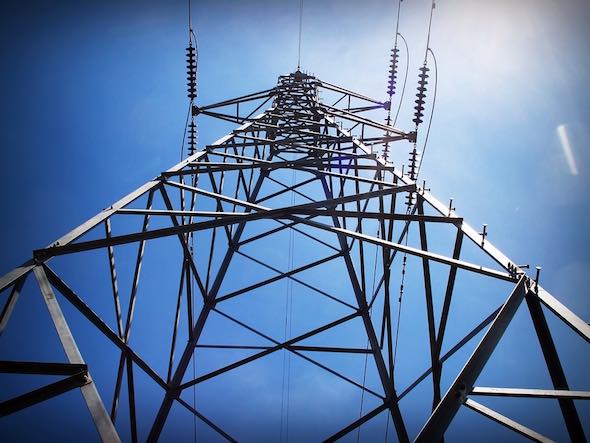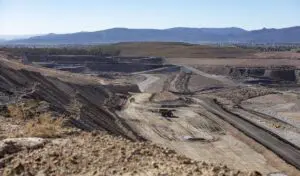According to a news release by the Australian Energy Market Commission last week (April 19), the COAG Energy Council has asked the AEMC to directly inform the energy ministers’ own priorities and work program.
This new process – agreed to in the tax deal with the Nick Xenophon Party – will replace the AEMC’s previous biennial strategic priority reviews. The advice will include a high level analysis of major challenges, risks and opportunities. The scope covers issues arising in all parts of the energy sector, including matters relating to electricity, gas and energy retailing.
The AEMC states that effective and active leadership by COAG is critical to:
 We think that the first piece of advice that the AEMC should provide COAG is that the AEMC itself is in dire need of some better KPIs [key performance indicators].
We think that the first piece of advice that the AEMC should provide COAG is that the AEMC itself is in dire need of some better KPIs [key performance indicators].
If the AEMC is the chief advisor to COAG, we need some metrics to define the success or failure of that advice. Those KPIs won’t be found in whether individual rule changes are subject to judicial review, or even whether they are started and completed in a timely fashion.
No, the test is much stronger than that.
The actual KPIs for the AEMC are found in the 2016 Annual Report and we note that:
- 70 per cent of stakeholders rated performance at 7 or more out of 10 in 2016 compared to 61% in 2013.
- 68 per cent of rule changes were completed without time extension. Or to put it another way, one-third of rule changes couldn’t be completed within the initial time budget
- 53 per cent of rule changes required more than four months to initiate an improvement on 17% started within four months in 2015.
So your author seems to be in the 30 per cent of its own stakeholders who find the AEMC’s performance on the less satisfactory side – and I wasn’t even surveyed. The fundamental problem can be found in the Chairman John Pierce’s message in the 2016 annual report.
But this is not the mission that the AEMC sets for itself with the advice it provides to COAG. More importantly, we don’t think that the AEMC really takes to heart what stakeholders want.
Our view is that recent events have provided evidence that suggests management and governance of the NEM is poor. There is faction ridden governance, but little management.
There is not much of a market: 50 per cent of the electricity price is driven by monopoly wires and poles regulation, where a price determination for NSW started in 2014 has still not concluded. The other 50 per cent is driven by a vertically integrated oligopoly. Measures of market concentration are increasing. It’s the same in gas.
So, if a KPI for the AEMC was “timely rule making”, “proactive rather than reactive rule making”, “providing an adequate, open source, model of the NEM that incorporates distributed electricity”, “providing big picture analysis of the effectiveness of the structure of the system;” we would suggest there is quite a lot of evidence of failure on the part of the AEMC.
It’s one thing to be a critic, and it’s another to have a go and let others make their own criticism. In that spirit we offer up some KPIs that might serve as a starting point for the AEMC to measure its performance by.
Top 10 in Energy Trilemma Global Index as a KPI
The Finkel draft report has popularised the phrase “Energy Trilemma” in Australia as a way of expressing the energy system’s three goals of “energy security”, “energy equity” and “environmental sustainability”.
The Finkel report is following on from international work that has been building since at least 2013 and is most notably carried forward by the “World Energy Council [WEC]. The WEC is an organisation started in 1923 which, according to its own website, has evolved into “one of the world’s most influential energy organisations”.
If we compare the energy trilemma with the AEMC’s view of COAG’s mission – as expressed in Fig 1 – we can see that the AEMC has “energy security” and “energy equity” in its sights, but completely ignores “environmental sustainability”.
We argue that this fundamental blind spot is the absolute essence of why the AEMC is providing poor advice to COAG and why the system is failing.
That’s because much of the change in the NEM is being driven by environmental considerations. Blind Freddy can see that, even if Tony Abbott can’t. The AEMC may be full of lawyers, but even they can’t be totally ignorant of what’s actually happening. What’s driving all this technological change? It’s climate policy.
The WEC, in partnership with Oliver Wyman (part of the Marsh & McLennan Group), ranks 130 countries on their Energy Trilemma relative scores.
In 2016, Australia ranked 31 with a BBC rating (B for price, B for security and C for the environment). We ranked below New Zealand, Canada and the USA and even Japan.
We rated 95 out of 130 countries on sustainability, we rated 33 on energy security and 39 on energy price. ITK expects our ranking to drop materially in 2017 based on the reduction in energy security and increases in electricity and gas prices.
We think an appropriate KPI for the AEMC and COAG to measure itself on is to achieve a top 10 ranking in this WEC Energy Trilemma Index.
This is a reasonably evidence-based, relative measure. Similar style scores are used across a wide range of industries in the private and public sector to provide evidence based relative performance.
Building a vision and a framework for the next 50 years
If a failing of the AEMC and COAG is the inability to develop an acceptable view of the future, then perhaps a KPI might be based around those lines.
For instance, a survey question might be:
“How satisfied are you with the structure of the NEM at present?”
“How satisfied are you with the way that distributed generation and micro grids are modelled and incentivised?”
“How satisfied are you with regulation as a way of setting prices for the distribution sector?”
In our opinion, developing a shared vision would start with better modelling. Modelling that is holistic rather than based at the generator level. That is, modelling that incorporates networks, transmission, distributed generation as well as simply choosing between coal and gas generation. Such modelling would be open-source with transparent alogrithms.







